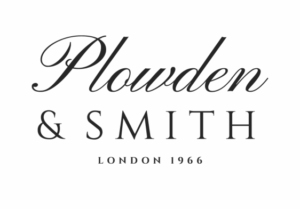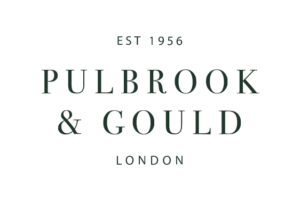The Art of Collecting Art Deco & Art Nouveau Sculpture and Glass, with David Hickmet
In some ways Art Deco is an elusive movement. Arising, partially, from Cubism and a reaction against the flowery decorative style of Art Nouveau in homage to the bold new frontiers of technology and the modern post-War world, it has never really been a single style, nor even named as such until decades after its emergence.
If it can’t be rigidly defined, like art or culture we tend to recognise it when we see it, identifying it from its characteristics: sleek lines, clearly defined geometric shapes, bold colours and luxury materials (marble, ivory, bronze and chrome, among others). Stylised human and animal forms are also much in evidence – the approach is graphic, in the positive sense.
In architecture, the new technologies of reinforced concrete and advanced plate glass expanded the frontiers of design, adding the curvilinear. Decorative objects echoed these innovations.
Established in 1936 Hickmet Fine Arts is now led by David Hickmet, third generation scion, a leading global authority on European Sculpture from the 19th and 20th Centuries who serves on the vetting committees of major antiques fairs in both the United Kingdom and the USA.
After almost 50 years in the business, he works with several members of his family and advises clients, museum curators and interior designers worldwide on the acquisition of original and authentic Art Nouveau and Art Deco Sculpture and Art Glass.
A firm fixture of The Berkeley Square Fair, David’s stand is an inevitable showstopper of fascinating and beautiful objects, sparkling with colour and light.
But what is the discerning collector casting their eyes on now, and what should those considering a first step into the worlds of Art Nouveau and Deco look out for?
Here David lets us into the secrets.
How has collecting changed in recent years?
I would say that both Nouveau and Deco have been very popular over the past 20 years but Deco has raced ahead and particularly among younger clients. It is dynamic in its lines and design and fits in both new and old settings whereas Nouveau objects have more of a static pose and less movement.
Younger people are attracted by the freedom of Deco, with its more animated and energetic subjects.
The change in the law around ivory has had a significant impact on Deco, meaning some pieces can no longer be sold. This has left pieces with just heads and hands made from ivory that are exempt under the ban even more popular with collectors.
Tastes have also changed, as has what is deemed acceptable socially. Nude sculptures are more difficult to sell than figures that have some cover, for instance. My star piece for the fair is of a woman with two dogs (pictured here), and I anticipate a lot of interest in that.
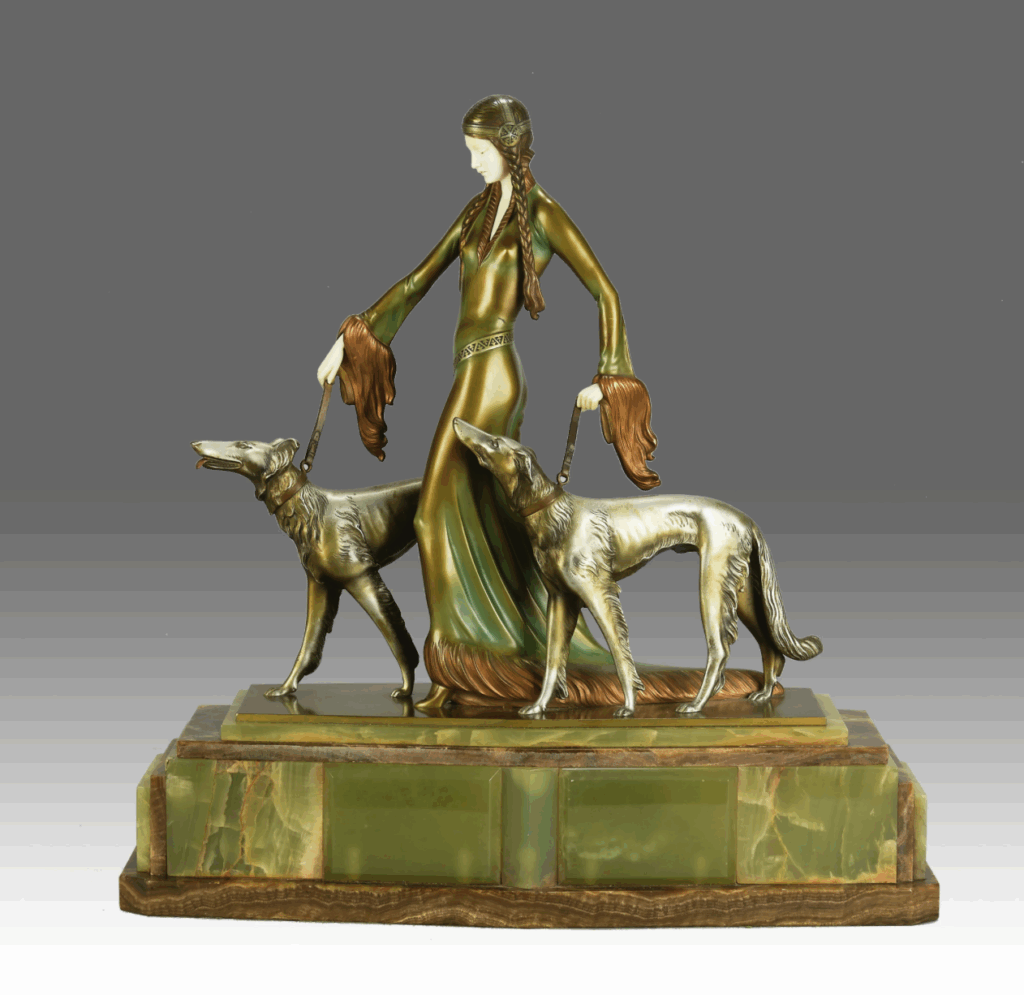
A magnificent 49cm high early 20th Century Art Deco cold painted bronze and hand-carved ivory figure of an elegant beauty wearing a loosely fitted full-length gown walking her two dogs, the sculpture with exquisite colour and intricate detail. Raised on a decorative Brazilian green and brown onyx base and signed Prof. Poertzel. Image David Hickmet
Lalique, Gallé and Daum are the leading makers when it comes to Art Nouveau and Deco glass. The craftsmanship is everything with Daum and Gallé, and they have tried for many years to reproduce the level of skill that was lost in the First World War, but they have never succeeded. The knowledge and the detail and how to make pieces sing on the surface has become a lost art.
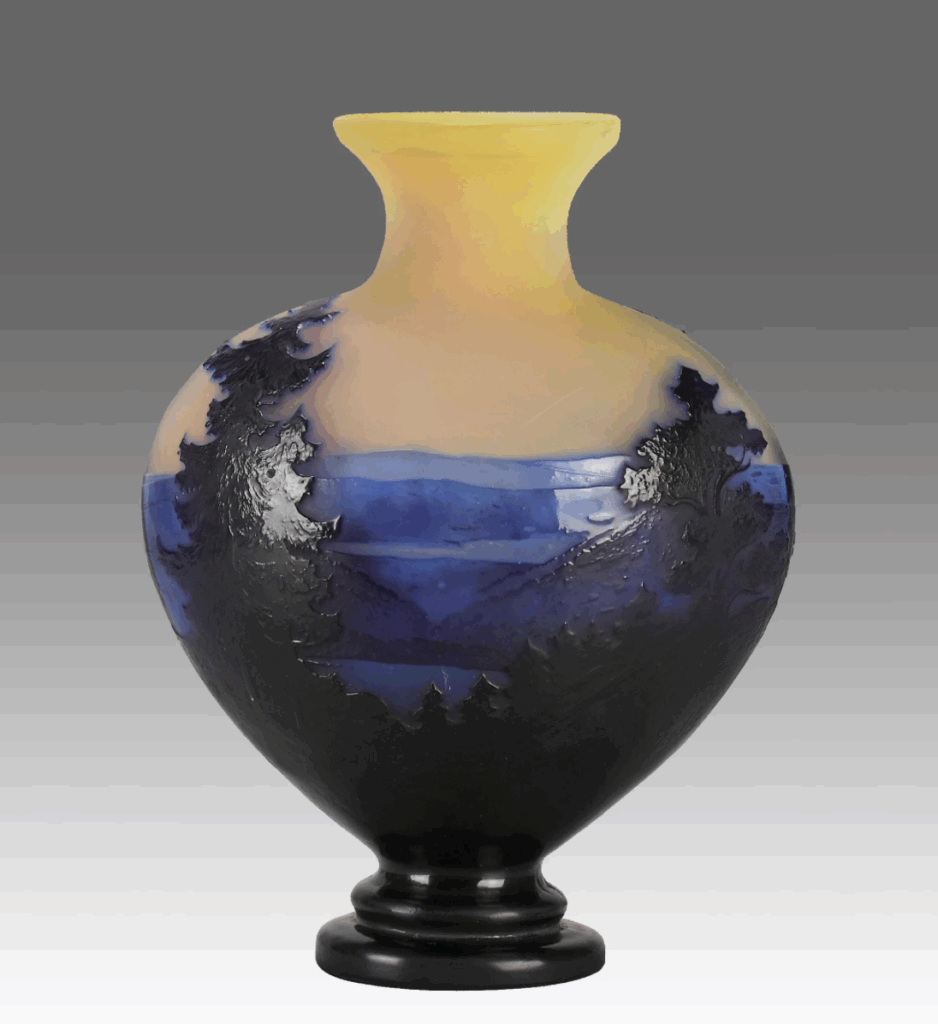
An eye-catching late 19th Century French cameo glass vase decorated with raised deep burgundy trees against a blue mountainous landscape against a variegating yellow field. Exhibiting excellent detail and colour, it stands 22.5cm high and is signed Gallé, in cameo. Image David Hickmet
It is different with Lalique because every piece comes from a mould, so really it is all in the design. Having said that, the best opalescent glass brings Lalique pieces to life in a way that other designs just don’t do.
Loetz is also wonderful but much more difficult to source, so does not have such a great following. But when really good pieces appear, they have a ready audience. I have just acquired a collection of five pieces of Loetz that I will be bringing to the Berkeley Square fair.
In the past antique dealers were the most important source for collectors, helping them to find and reference objects and to educate them towards building unique collections in their personal taste. More recently, especially since Covid, the internet has become a focal point for clients to digest copious amounts of information around their interests and acquire items from a worldwide platform of dealers and specialist websites.
In this regard we are extremely pro-active in promoting our online presence and we have gained a loyal following worldwide that was previously inaccessible to us.
Who is collecting now and what are the best routes to market?
With the evolving global platform on the internet we now find that the majority of our clients are from outside the U.K. Our gallery in Portobello Road primarily attracts visitors from abroad – 95% are tourists – as it is one of the few places left in London with a high enough concentration of antiques to appeal to them. Our sales via the internet have climbed from 10-40% of our turnover since Covid. This does not mean that we are selling a great deal more, just that those who have visited us in London subsequently have the confidence to visit our website and purchase items after they return home. In addition, we also use online platforms including 1st Dibs, Selling Antiques and Artprice to list our stock and these powerful platforms are very successful in promoting our specialist market.
Fairs are also important though, and the Berkeley Square Fair is our favourite. Generally our client base is around 60 years old, but that drops to around 40 at Berkeley Square. Seeing our pieces in the flesh in that setting often results in them buying multiple items.
What are their priorities?
The first priority is always that you should be captivated by what you are buying, but we are also finding today that ‘context’ or more specifically ‘the story’ has become the major focus for a large number of the newer, and often younger clients that we engage with. As the majority of our stock is acquired from private sources, we have become much more pro-active in ascertaining where, how and in what context vendors have owned their items over the years. This extra history gives a ‘life and character’ to each piece that enhances the client’s enjoyment and appreciation over the years.
What pieces are they interested in?
As we specialise in the major artists from the Animaliers, Art Nouveau and Art Deco periods we concentrate on promoting these items at our gallery, at our exhibitions and on the internet. We find clients will often ‘dip their toes in’ by initially making a small purchase; this will then be the start of a long and fruitful journey as they increase the quality and value of their bespoke private collections. It is always a joy to visit our clients and see how much they enjoy pieces purchased from us over the years that are now in pride of place around their homes.
Demétre Chiparus and Ferdinand Preiss are the two big names when it comes to sculpture. The best piece I ever handled was Les Girls, a group of five Ballet Russes dancers by Chiparus. It was a family piece that eventually moved on. It would cost around £400,000 now.
What should they be keeping an eye out for? What are the key factors to consider and what should they avoid?
There will always be the usual priorities of quality, colour and authenticity but today people can sometimes be swayed by whatever they are told is ‘in fashion’. Whilst this will give a modicum of satisfaction and enjoyment in the short term, one should be careful that you are buying pieces because you are enthralled by them and not because you are informed that they are in vogue. This will ensure a greater sense of appreciation over the years.
Tell us a bit about yourself
In my early 20s I was encouraged by my father to qualify as an accountant, but it soon became apparent to me that I wouldn’t enjoy sitting in an office all day staring at numbers. It was only then that I was invited to join the family antiques business which had been started by my grandfather in 1936. This felt completely natural, as I had been brought up amongst beautiful antiques all my life, and I soon realised that this would be my life’s vocation. With a plethora of my own children now I am pleased to say that one of my sons, Harry, and one of my daughters, Sydney, have joined the business and are confidently taking the family business into its ‘fourth generation’.
What would have been your alternative career?
Having tried my hand in a single prop Chipmunk aeroplane many years ago I have always fancied becoming a pilot as an alternative career. I would say, though, that my career in antiques has been the most wonderful experience over the years, so I feel very blessed.
